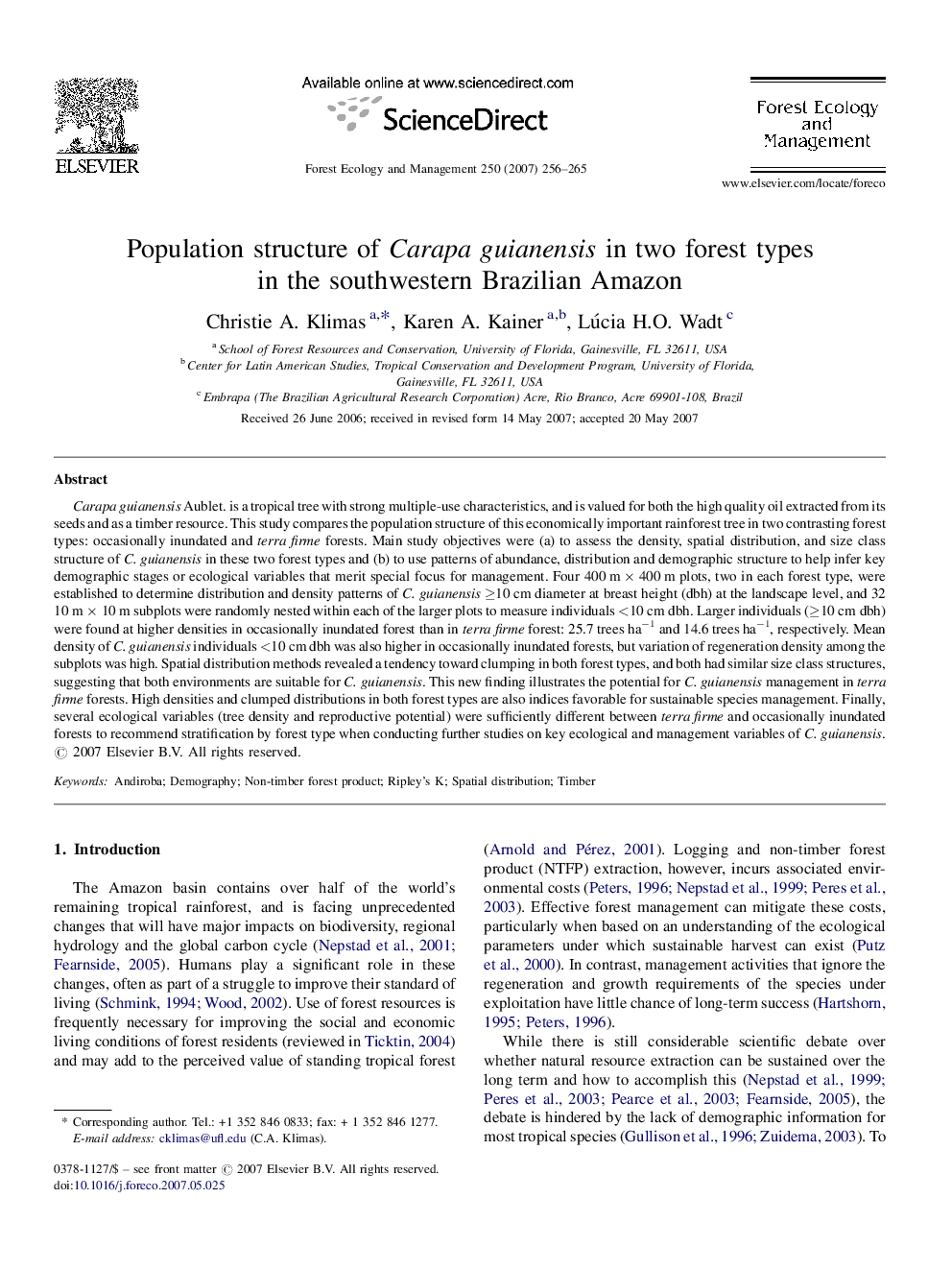| کد مقاله | کد نشریه | سال انتشار | مقاله انگلیسی | نسخه تمام متن |
|---|---|---|---|---|
| 90423 | 159379 | 2007 | 10 صفحه PDF | دانلود رایگان |

Carapa guianensis Aublet. is a tropical tree with strong multiple-use characteristics, and is valued for both the high quality oil extracted from its seeds and as a timber resource. This study compares the population structure of this economically important rainforest tree in two contrasting forest types: occasionally inundated and terra firme forests. Main study objectives were (a) to assess the density, spatial distribution, and size class structure of C. guianensis in these two forest types and (b) to use patterns of abundance, distribution and demographic structure to help infer key demographic stages or ecological variables that merit special focus for management. Four 400 m × 400 m plots, two in each forest type, were established to determine distribution and density patterns of C. guianensis ≥10 cm diameter at breast height (dbh) at the landscape level, and 32 10 m × 10 m subplots were randomly nested within each of the larger plots to measure individuals <10 cm dbh. Larger individuals (≥10 cm dbh) were found at higher densities in occasionally inundated forest than in terra firme forest: 25.7 trees ha−1 and 14.6 trees ha−1, respectively. Mean density of C. guianensis individuals <10 cm dbh was also higher in occasionally inundated forests, but variation of regeneration density among the subplots was high. Spatial distribution methods revealed a tendency toward clumping in both forest types, and both had similar size class structures, suggesting that both environments are suitable for C. guianensis. This new finding illustrates the potential for C. guianensis management in terra firme forests. High densities and clumped distributions in both forest types are also indices favorable for sustainable species management. Finally, several ecological variables (tree density and reproductive potential) were sufficiently different between terra firme and occasionally inundated forests to recommend stratification by forest type when conducting further studies on key ecological and management variables of C. guianensis.
Journal: Forest Ecology and Management - Volume 250, Issue 3, 20 October 2007, Pages 256–265